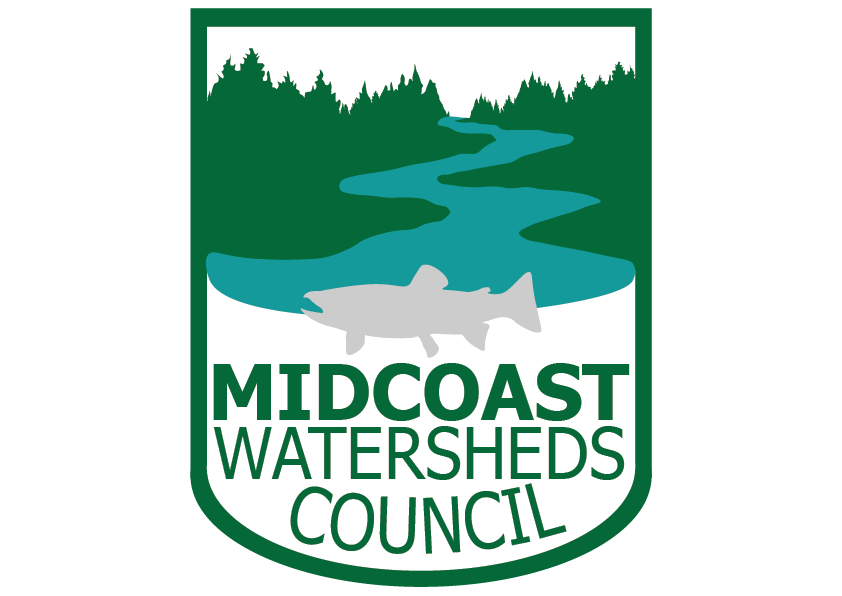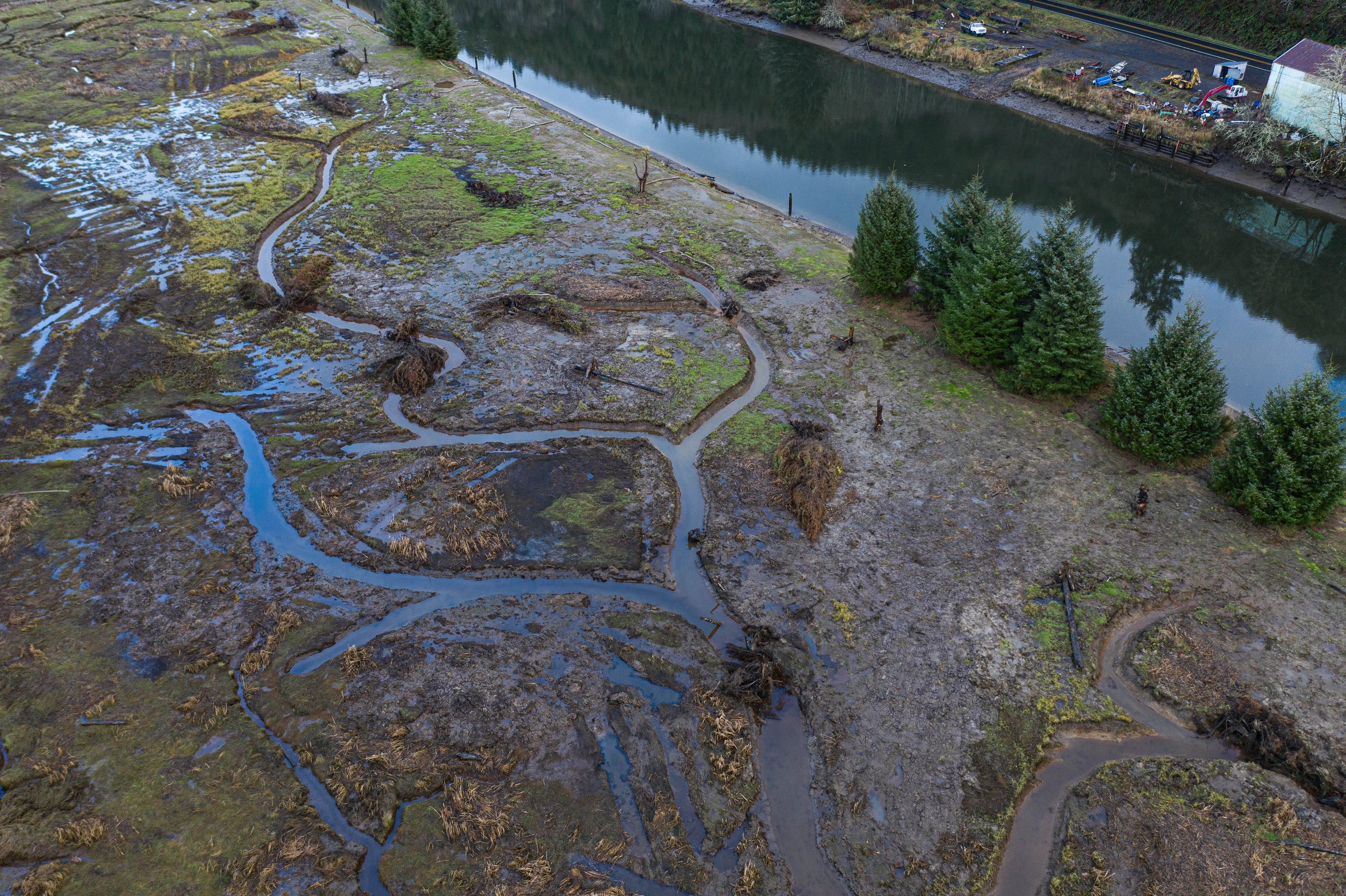Reconnecting Tidal Marshes
The tide has large influence on rivers, even miles upstream of the ocean. High tides create temporary aquatic habitats that are extremely important to juvenile salmon and other fish.
Across the Yaquina River from Elk City Road near Cannon Quarry Boat Launch, MCWC and partners improved habitat for coho, chum and Chinook salmon by restoring the tidal marsh known as “Y27”.
Map of the Y27 working area
Y27 at high tide
Y27 at low tide
Contractors removed sections of the failing dike and filled artificial drainage ditches to encourage water to use reconnected natural channels and newly dug channels. We protected spruce trees from a 2001 restoration planting project.
Our crew planted the entire site with spruce and other wetland species and will tend to them over several years to establish forested tidal wetland habitat and control invasive species. Trees and root wads were placed into the channels to immediately provide cover for fish.
As tides carve the channels we started and form new ones, the river will deposit its sediment and actually raise the elevation of the area over time. The new sediment and vegetation will increase the areas resiliency to flooding and sea level rise. This project is informed by the history of restoration on this parcel and estuary science from around the coast.
Funding for this work was received from the Oregon Watershed Enhancement Board, the US Fish and Wildlife Service Fish Passage Program, with additional support from the Pacific Marine and Estuarine Fish Habitat Partnership and the Oregon Wildlife Foundation. Project partners include the City of Toledo, the Confederated Tribes of Siletz Indians, the Wetlands Conservancy, Pacific States Marine Fisheries Commission, Oregon Department of Fish and Wildlife and US Fish and Wildlife Service Partners for Fish and Wildlife.





